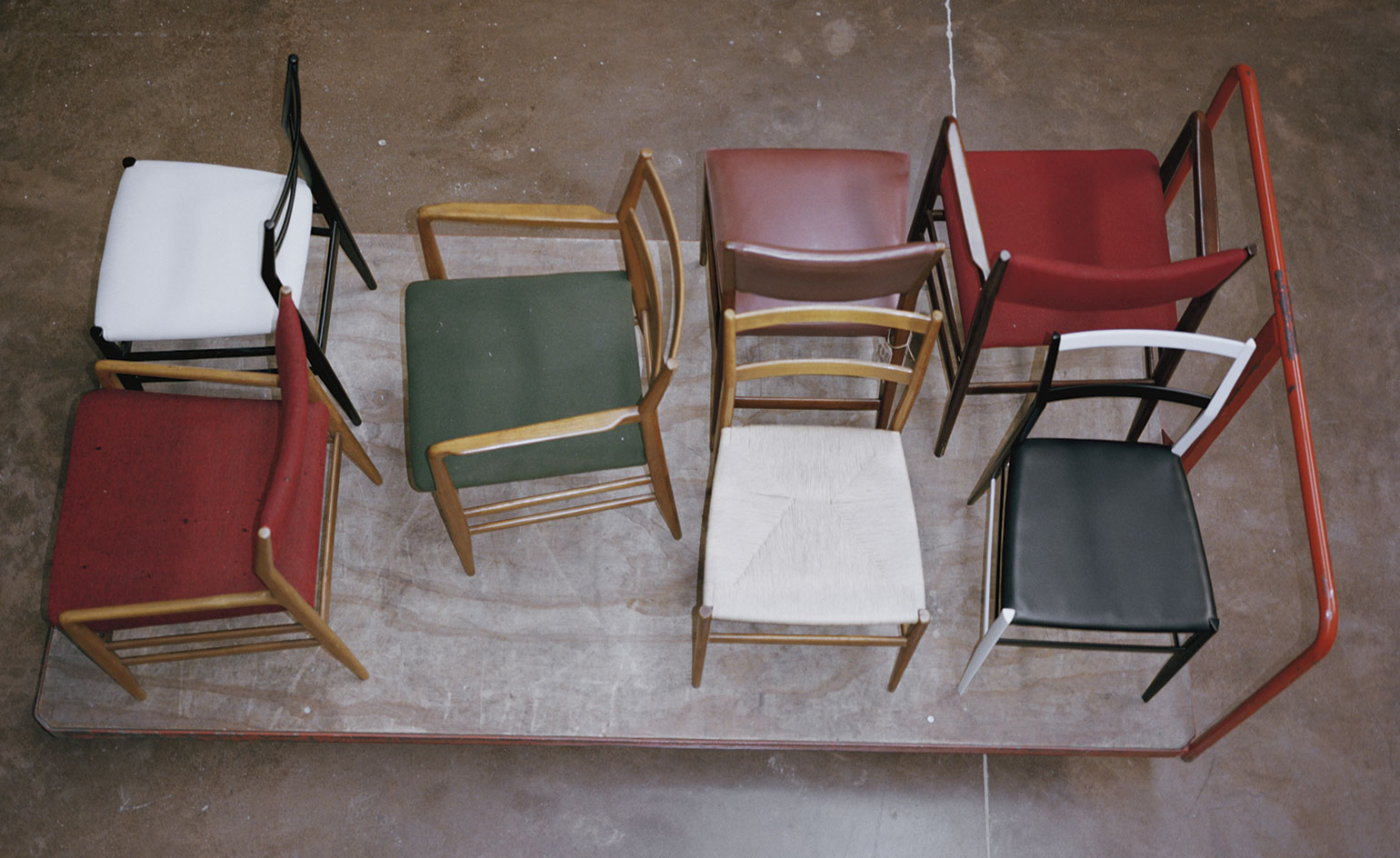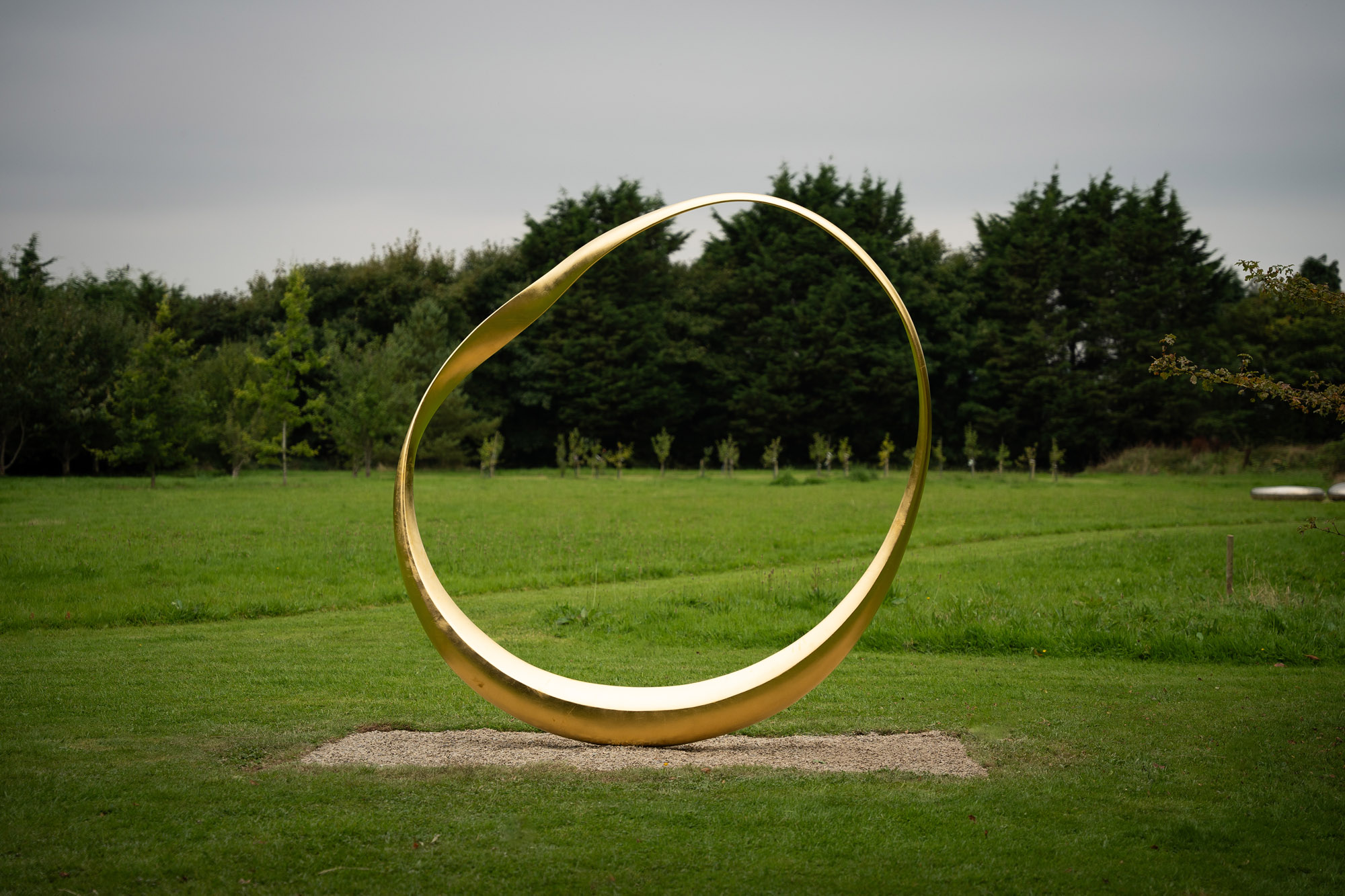Cassina marks 90 years with a revamped HQ, a new gallery space and a fresh look at its classics

As part of this year’s anniversary celebrations, Cassina commissioned photographers Armin Linke and Giulia Bruno to follow the work of its artisans. Here, a master carpenter assembles a ‘’699 Superleggera’’ chair, an iconic model designed by Gio Ponti for Cassina. Made of a natural ashwood frame and India cane seat, the ‘‘super lightweight’’ chair has been in production without interruption since its creation in 1957.
A squat 1940s workshop, set behind a single train track in blue-collar Meda, Lombardy, produced the first industrialised models for the Italian furniture maker Cassina. For a while, the Cassina family lived here too, running a small shop on the premises. While Milan, 20km away, became the pretty face of modern Italian design, here in Meda is where the Cassinas got their fingernails dirty. This year Cassina turns 90, and to mark the occasion, the pioneer of 20th-century Italian design got a manicure, facelift and more besides.
In Meda the Spanish designer Patricia Urquiola – Cassina’s art director for nearly three years – has transformed the old production facility into a post-industrial nirvana. Urquiola has sheathed the front courtyard in theatrical perforated-aluminium curtains, smoothed the rough stone surfaces, built an ‘tower’ in perforated Cassina-red metal and reached into the back catalogue of Cassina maestri to furnish the cavernous spaces: 1949 side tables by Piero Lissoni as well as low ‘Refolo’ tables by Charlotte Perriand and ‘LC2’ sofas by Le Corbusier, Pierre Jeanneret and Perriand in updated sorbet-green and blue. To create an intimate breakout space she’s installed a replica of the Refuge Tonneau in the ‘refreshment room’. The futuristic mobile shelter was designed by Perriand and Jeanneret in 1938 and produced for the first time by Cassina in 2012.

The renovated central courtyard now features an ‘office tower’ in Cassina-red perforated metal, designed by the brand’s art director Patricia Urquiola. © Armin Linke and Giulia Bruno, 2017. Courtesy of Galleria Vistamare, Pescara
It all encapsulates beautifully Cassina’s philosophy, something managing director Gianluca Armento calls looking back to move forward. It’s counterintuitive, but I believe the truer you are to where you’ve come from, the more innovative you’ll be, he says, after unveiling the space to employees last summer. Inaugurating this new, bolder look for Cassina HQ is the culmination of two years of dusting-off and deconstructing old classics – from Gerrit Rietveld’s 1935 ‘Utrecht’ armchair, upholstered with Bertjan Pot’s triangle-pattern jacquard, to the relaunch of the ‘Pampas’ chair by Le Corbusier, Jeanneret and Perriand. Similarly, Urquiola’s streamlining and ‘challenging of the original architecture at Meda shows the real spirit of Cassina in a more modern way’, says Armento.
‘The soul of Cassina is making advancements on how we create things. What do we want to leave behind? Not just midcentury modern pieces, but an evolution. Keeping it authentic while modifying the angle and story is a science of how to maintain a glorious heritage. And anniversaries are part of that.’ A rather literal expression of that sentiment can be found in the HQ’s new gallery, metres from where co-founder Cesare Cassina first tested the soundness of Gio Ponti’s ‘699 Superleggera’ chair in the 1950s. The inaugural exhibition, by photographers Armin Linke and Giulia Bruno, follows Cassina artisans as they piece together furnishings such as the ‘Cicognino’ table by Franco Albini and the new ‘646 Leggera’, an updated version of the classic ‘Superleggera’.
Linke’s photographs zoom in on the tools of the trade: Bacci CNC routers for fashioning round-edged ash legs and computers equipped with sophisticated 3D programmes. Ultimately, though, the same hands-on method from the 1950s takes over. The process of capturing it, Linke says, was downright anthropological. ‘The “Leggera” chair is shaped by artisans who have been working this way for centuries, but also by the classical industrial process and finally the era of robotics. So you have one piece of furniture from three different eras.’
And so continues the dialogue between modernism and the present day, the intertwining of handcraft – ‘which is now often forgotten, but fascinating,’ says Linke – with the outer limits of digital technology. ‘Every component has a story, and finding that language to fit them together has an elegance, like writing software code or choreography.’
To expound further on the theme, this month Cassina releases its 90th-anniversary monograph – no mere coffee-table retrospective, but rather a treatise on the industry moving forward. Edited by Pin-Up magazine founder Felix Burrichter, This Will Be the Place taps contemporary experts including designer Konstantin Grcic, architectural historian Beatriz Colomina and architect Zhao Yang, and asks them to arrive at a vision of the future home based on their appreciation of the past.
The significance of history ‘as a point of reference of excellence’ is something Barbara Lehmann, director of Cassina’s archives, sets up in her introduction. ‘There can be no future without a knowledge of the past,’ she writes. Armento insists the brand has always looked forward a generation for creative input. ‘Some of the furniture we produce was designed over 100 years ago, but remember, the designers were in their twenties, thirties and forties, creating change, creating progress,’ he says. ‘That is still our responsibility, and that is what I want to pay tribute to.’
As originally featured in the October 2017 issue of Wallpaper* (W*223)

© Armin Linke and Giulia Bruno, 2017. Courtesy of Galleria Vistamare, Pescara
A replica of Charlotte Perriand and Pierre Jeanneret’s 1938 Refuge Tonneau takes centre stage in the communal area of Cassina’s Meda HQ.

© Armin Linke and Giulia Bruno, 2017. Courtesy Galleria Vistamare, Pescara
Models from the Cassina archive, including ‘Superleggera’ and ‘Leggera’ chairs, photographed by Linke and Bruno for the inaugural exhibition of the HQ’s new gallery space.
Wallpaper* Newsletter
Receive our daily digest of inspiration, escapism and design stories from around the world direct to your inbox.

© Armin Linke and Giulia Bruno, 2017. Courtesy of Galleria Vistamare, Pescara
Cassina’s 90th-anniversary monograph This Will Be the Place (Rizzoli, €80).
INFORMATION
For more information, visit the Cassina website
Based in London, Ellen Himelfarb travels widely for her reports on architecture and design. Her words appear in The Times, The Telegraph, The World of Interiors, and The Globe and Mail in her native Canada. She has worked with Wallpaper* since 2006.
-
 Inside the Shakti Design Residency, taking Indian craftsmanship to Alcova 2025
Inside the Shakti Design Residency, taking Indian craftsmanship to Alcova 2025The new initiative pairs emerging talents with some of India’s most prestigious ateliers, resulting in intricately crafted designs, as seen at Alcova 2025 in Milan
By Henrietta Thompson Published
-
 Tudor hones in on the details in 2025’s new watch releases
Tudor hones in on the details in 2025’s new watch releasesTudor rethinks classic watches with carefully considered detailing – shop this year’s new faces
By Thor Svaboe Published
-
 2025 Expo Osaka: Ireland is having a moment in Japan
2025 Expo Osaka: Ireland is having a moment in JapanAt 2025 Expo Osaka, a new sculpture for the Irish pavilion brings together two nations for a harmonious dialogue between place and time, material and form
By Danielle Demetriou Published
-
 This collection of slow furniture is a powerful ode to time
This collection of slow furniture is a powerful ode to timeA serene exhibition of David Dolcini's 'Time-made' collection has fast-tracked its place into our hearts and homes
By Ifeoluwa Adedeji Published
-
 B&B Italia unveils Tufty-Time 20, a reimagining of its iconic modular sofa
B&B Italia unveils Tufty-Time 20, a reimagining of its iconic modular sofaThis year marks 20 years since the first Tufty-Time sofa was launched; to mark the occasion, B&B Italia has released an updated version of the much-loved model
By Anna Solomon Published
-
 A hidden Gio Ponti illustration comes to light for ‘Dezza’ armchair’s 60th
A hidden Gio Ponti illustration comes to light for ‘Dezza’ armchair’s 60thPoltrona Frau brings a lost Gio Ponti illustration to life in leather for the designer’s ‘Dezza’ armchair’s anniversary celebration
By Ali Morris Published
-
 An appetite for design: 10 of our favourite dining tables
An appetite for design: 10 of our favourite dining tablesDiscover the best dining tables: a curated selection of enduring favourites and exciting new pieces from designers around the world.
By Ali Morris Published
-
 Gather round! The best coffee tables for design lovers, from the colourful to the sculptural
Gather round! The best coffee tables for design lovers, from the colourful to the sculpturalExplore the best coffee tables: discover our handpicked selection of enduring favourites alongside new, notable pieces
By Ali Morris Published
-
 Best new lighting designs to brighten up your space
Best new lighting designs to brighten up your spaceFrom ruby red pendants to sculptural table lights, we bring you the brightest moments from the latest in lighting design
By Léa Teuscher Published
-
 Vincent Van Duysen ‘inspired by modernism’ for Molteni & C’s outdoor furniture debut
Vincent Van Duysen ‘inspired by modernism’ for Molteni & C’s outdoor furniture debutMolteni & C goes alfresco with two new collections and reissued classics, bringing its signature elegance to the great outdoors
By Rosa Bertoli Published
-
 Vipp Palazzo pop-up hotel opens inside Brescia’s historical Palazzo Monti
Vipp Palazzo pop-up hotel opens inside Brescia’s historical Palazzo MontiScandi minimalism meets Baroque maximalism in Vipp Palazzo, a pop-up hotel by the Danish brand in the heart of Brescia
By Rosa Bertoli Published